Introduction
In this article we are going to be taking a detailed look into different species of foxes and their unique claws.
All Foxes are digitigrades; meaning that they walk on their toes, not touching the ground with their heels. Unlike most members of the family Canidae, which include foxes, wolves, and jackals, foxes have partially retractable claws, which means that it gives some species of foxes, like the grey fox, the ability to climb trees.
Since foxes’ claws are always protruding from their paws it makes it easier for them to fight off any predators they may encounter, dig holes in the ground to find food, make dens deep under the earth, and hunt down their prey.
Now let’s dive into a more detailed look at these unique creatures and all their specific claw features!
Arctic Fox Claws
Arctic foxes, also known as a white fox or snow fox, inhabit the northern tree line in the Arctic tundra. The environment that they live in requires them to have some unique features that distinguish them from the rest of their fox cousins. Since these foxes are subjected to extreme temperatures they have adapted to living underground, beneath the snow.
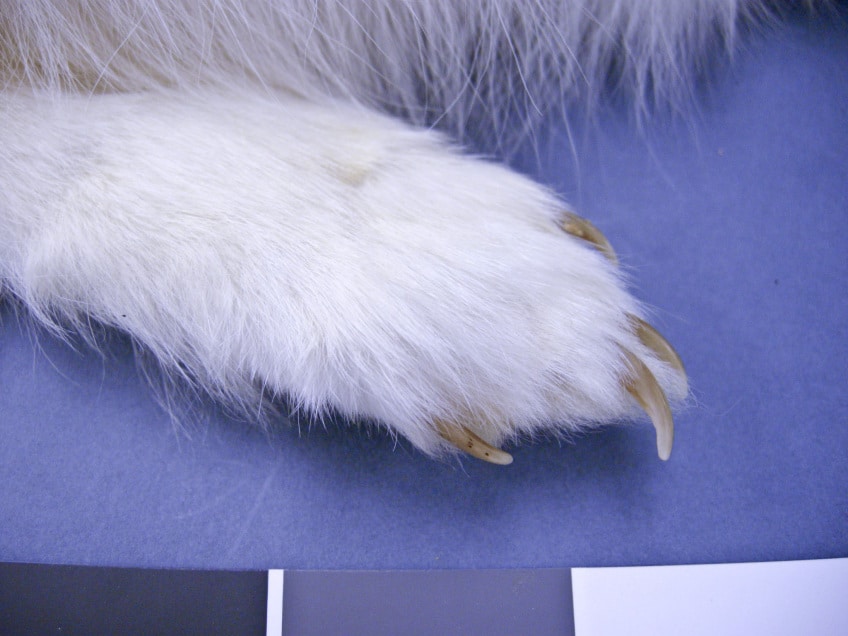
They dig their way down to avoid the frigid cold and high winds, which means that their paws need to be thicker and more insulated, which they are! The claws of the arctic fox help them to catch their main prey which are, baby seals, eggs from tundra birds, lemmings, which live under the surface of the snow, and berries/seaweed when available.
Arctic fox claws are slightly curved and very sharp, making it ideal for hunting, fending off predators such as the wolves, snowy owls, polar bears, and wolverines, and making their homes deep under the snow.
The extreme condition these foxes are subjected to have, in turn, caused for some smaller differences in their paws, claws, and legs. Compared to other foxes, the arctic fox has proportionally smaller legs then most. The claws of the snow fox are cushioned in quite a thick layer of fur, which aids the grip of their paws so that they can walk on snow and ice without complication.
Gray Fox Claws
The Gray fox are unique in their own right. These creatures have semi retractable claws that stay sharp their whole life. These foxes resemble cats in many ways, and are compared oftentimes to their feline doppelgangers. Similar to cats, these foxes often climb trees, sometimes even sleeping on a branch. The sharp curve of their claws, and their rotating forearms make tree climbing possible and put them apart from any other fox.
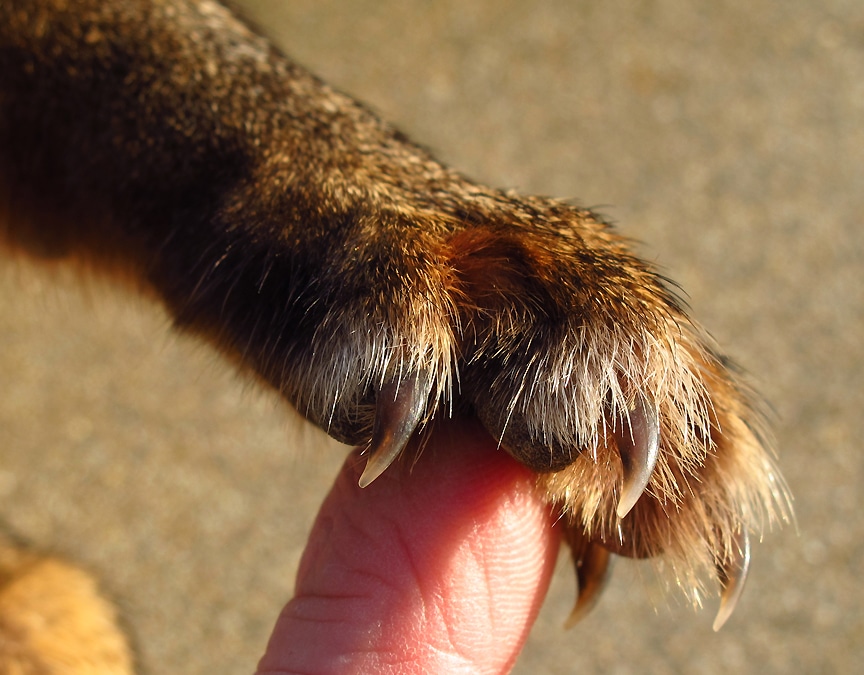
Gray foxes can climb vertically up the tree, going up to heights of over 60 feet and even leaping from branch to branch to escape from predators, catch any prey that may reside up above, or find a comfortable spot to take a nap. Some gray foxes have developed certain characteristics in their claws that set them apart from some other species. An example would be the gray fox that lives in more forested regions of Mexico. It has been found that these foxes have sharper and more curved claws.
The hunting behaviors of the gray fox also differentiate them from their relatives, and makes the unique shape of their nails useful. It uses its pointed, movable ears to locate small animals moving under snow or matted vegetation then It will then leap and pounce attempting to pin the prey with its four paws, proceeding to use its claws to pin the animal down and consume its prey.
Gray fox tracks show four toes and claws and since the claws are semi retractable, sometimes the claws do not show and their tracks tend to average less than two inches in length.
Swift Fox Claws
Unlike its other fox relatives, the Northern Swift Fox is one that faces endangerment and is already extinct in some places in the United States and Canada. The reason for this being habitat destruction, and intensive hunting and trapping.
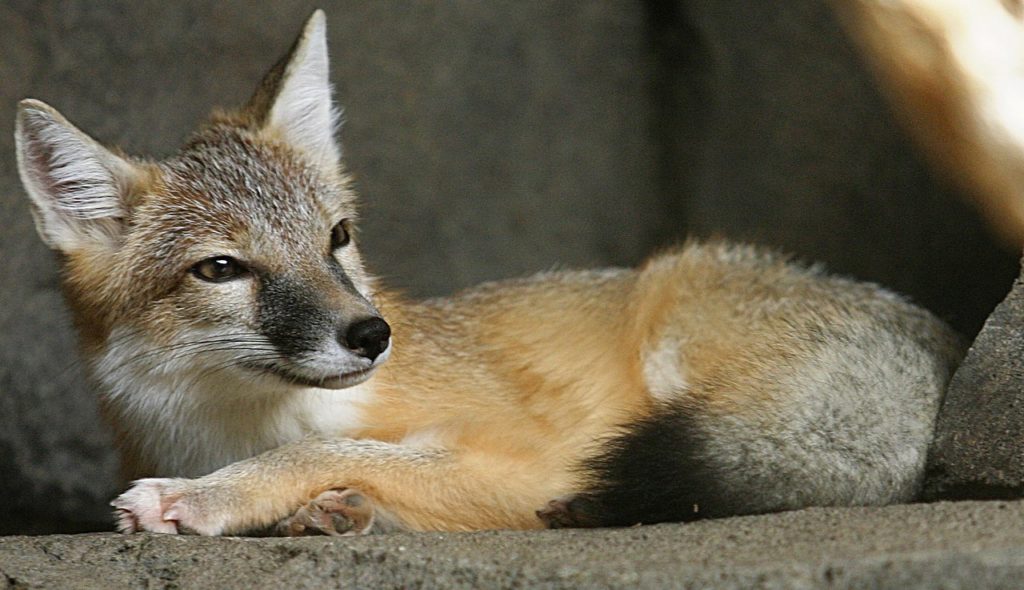
As the smallest member of the fox family, the swift fox is roughly the size of a house cat but can reach a speed of over 50 miles per hour. Known to reside primarily in their dens during the day means that during the night they use their incredible speed and swift claws to hunt down their prey which includes rabbits, mice, lizards, insects, and birds.
Unlike most others from the fox family, swift foxes use dens throughout the year, not only for protection, but also for giving birth to their young. Some dens consist only of a single burrow and entrance; others consist of birthing lairs and are often very complex, including mazes of interconnected tunnels with multiple entrances.
When these tunnels are constructed the excavated dirt is usually pulled away from the entrance, more often than not in a straight line. Although swift foxes will enlarge or modify ground squirrel or badger holes, they are fully capable of digging their own dens due to the swift foxes’ claws which enable it to burrow and catch its prey.
Red Fox Claws
Known to be the most common of foxes around the world with the widest geographical range of any of its relatives, the red fox is one that has pads on the bottom of the paws which allows it to move with ease in any type of terrain.
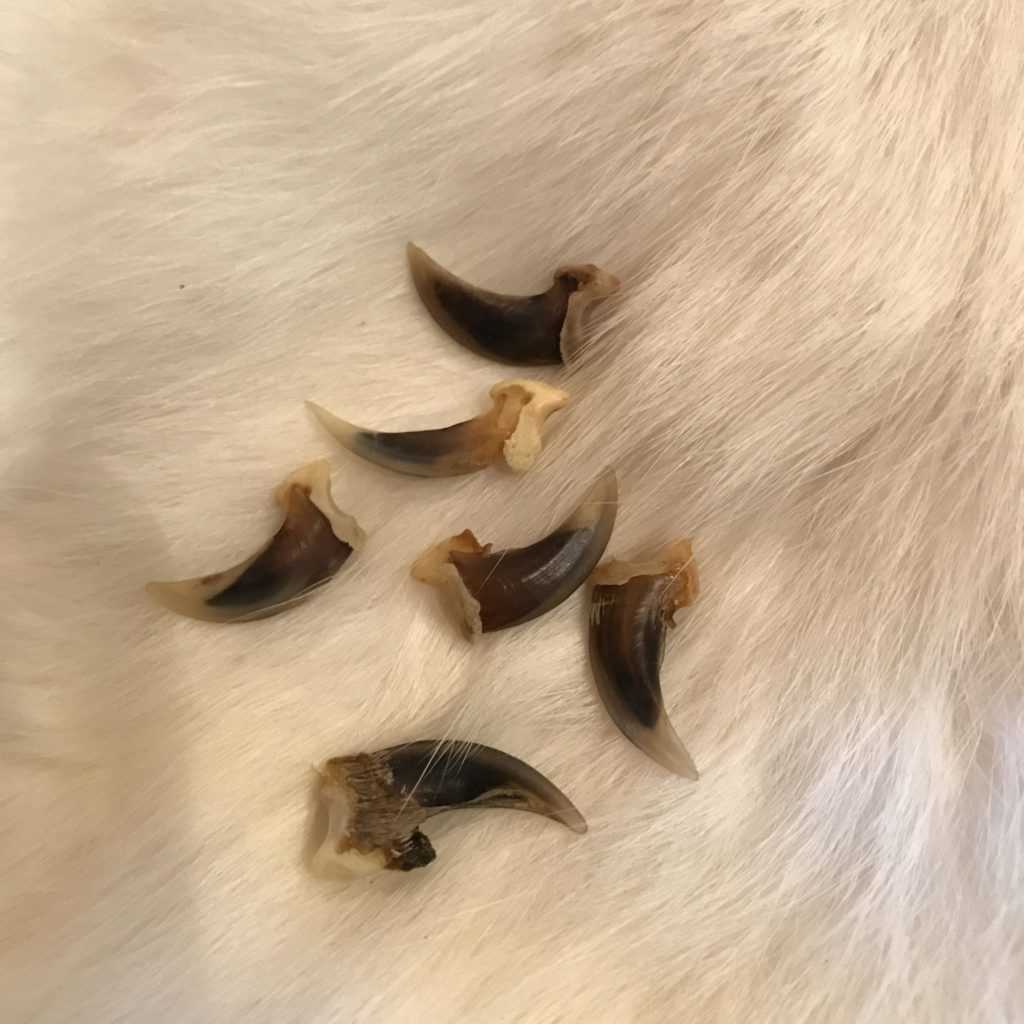
Their claws, like most of their fellow foxes, are very sharp and protrude out of their paw at all times. The red foxes’ claws help them to capture prey, to fight off any predators they might encounter, to dig dens, and to get to any food that may be located underground.
The red fox is one of the more domesticated of its kind, it can reside in places with a dense population of humans. This makes it more likely for the foxes to scavenge through things such as garbage, poultry farms, and nature reserves.
Due to them being so comfortable around people they have been the target of hunting and trapping. However, some foxes have been known to get so accustomed to the presence of humans that they even let people go up to them and pet them. Nevertheless, these creatures manage to keep thriving in any environment they are in.
Kit Fox Claws
The claws of the kit fox have been adapted to aid their survival in the environment that they reside in. These species of foxes make their home in the deserts of Colorado, Arizona, New Mexico, Oregon, and Western Texas. Due to these dry, sandy conditions their claws have been customized to fit their needs.
Unlike other foxes, the kit foxes’ claws have padding and fur in between them. This serves the purpose of helping them glide over the sandy terrain with ease, silence their footsteps when they walk so that they can sneak up on prey and ambush them, and protect their paws from scorching as they walk on the blistering sand.
Being the one of the smallest foxes in North America, the kit fox measures in at around 18-21 inches in length and around 12 inches in height, making it no larger than a small cat.
The main prey of these foxes consist of Kangaroo rats, jackrabbits, mice, and lizards, however they will eat pretty much anything that will fit in their mouths. Having the ability to be stealthy and sneak up on prey gives these little guys and the advantage of hunting creatures that are pretty fast and can jump away if they sense danger.
Fennec Fox Claws
The fennec fox is one that resides in regions of North Africa and the Sahara Desert. These foxes are known for digging elaborate burrows that tunnel and form underground communities.
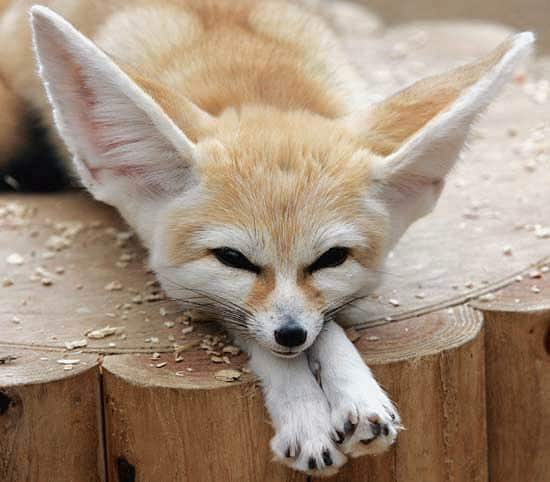
The claws of the fennec fox aid them in their digging ventures because the claws themselves are very sharp and curved, however, besides the fact that they rely on their claws very heavily for digging and burrowing, they also use their sharp nails for hunting down prey like lizards, mice, and any berries or vegetation they like, often time bringing the excess food back to their dens.
This fox in particular is one that relies mostly on its sense of hearing to hunt down its food, unlike many of its relatives, its ears are disproportionately large compared to its body, making their ability to hear any bugs or critters roaming underground impeccable. Once they locate their prey, they then proceed to dig it up with its sharp claws and consume it, or take it back to its burrow.
Tibetan Sand Fox Claws
The Tibetan sand fox from western China is a fox with very distinguishing features, one feature that differentiates it from the other foxes is how it hunts. Unlike some of its cousins, the Tibetan fox hunts alongside other predators such as the brown bear.
Working as a team, these two will form a partnership where the bear digs out the prey, pikas, and the fox proceeds to grab the animal with its claws and pull it out of the hole or catch the creature if it tries to escape from the bear. In comparison to the red fox, the Tibetan fox is almost identical in claw size and looks, however, there are a few things that distinguish them from the rest.
The Claws of the Tibetan sand fox are a bit smaller in size when compared to the red fox, its paw print range in size from small to medium size prints with four toes and its claw marks visible in the print.
Crab-eating Fox Claws
The crab eating fox was named this for a reason, and the reason being the fact that this fox eats crustaceans during the wet season. This fox has longer, black claws that protrude out of its paw, the claw, in comparison with other species of foxes claws, is not as wide and not as curved or pointed as some of its fox relatives. This makes it ideal for the food it hunts and the way they live.
Similar to other foxes, the crab eating fox burrows down under the ground, however, many of them prefer to live in burrows that have already been made by another animal. These foxes are also known to not only hunt its prey, but much like cats, play with its prey for fun.
They do this by poking the creature with its claws, tossing them around with their paws, and using other techniques unique to them to hunt prey. The claws of this fox are designed specifically to tear, and this feature benefits them based on their habitat and way of life.
Blanford’s Fox Claws
The Blanford’s fox is one that inhabits the mountainous regions of Egypt, Afghanistan, and Israel. Considering the incredible terrain they maneuver, their claws are designed to facilitate movement through the rocky, steep platoes.
The paws of this fox are hairless, with their claws being very curved and sharp and shown to be semi-retractable. These incredible foxes have the ability to climb rock and cliffs, as well as making astonishing jumps from ledge to ledge, some being over nine feet apart!
Not only can the Blanford fox jump over precarious ledges, they also can climb vertically with ease including cliffs that may be eroding and crumbling under their feet. The Blanford foxes’ claws assist them in gripping the rocks and their naked paws act as traction so they don’t slip off the narrow ledges.
Hoary Fox Claws
The hoary fox that resides in Brazil is a fox that, unlike other foxes, preys mostly on insects. This fox is a very small and slender animal, making it pretty swift and agile. The anatomy of the hoary fox is very similar, if not the same as the red fox.
The paws of the hoary fox are padded and its claws are sharp and pointed, like its cousins. These claws help the hoary fox to get to their insects that may reside under the ground, to dig their dens, and to defend them against any predator they may encounter.
Pampas Fox Claws
Also living in Brazil, the pampas fox, similar to the hoary fox, preys on small rodents and critters. Living in grasslands and plains, the pampas fox is one that also has retractable claws like all its other fox friends.
Measuring in at around 62 cm in length and with a weight of around 14lbs, this fox is not the smallest of foxes. Similar to many others, the pampas fox is one that preys on its food at night, typically hunting rabbits, frogs, birds, and sometimes even domestic livestock.
This specific type of fox is preyed upon by animals like anacondas, loss of its natural habitat, and also humans. Even though this fox may not have the most unique claws in the fox world, they still help them adapt to their environment, survive, and thrive.
Wow!
- Did you know the red fox has pads on the bottom of its feet so it can move very quickly and efficiently through any type of terrain?
- Did you know that foxes are members of the dog family? Baby foxes are often called “pups”, “kits” or “cubs”!
- Did you know foxes are the most widespread species of wild dog in the world? Pretty cool right!







